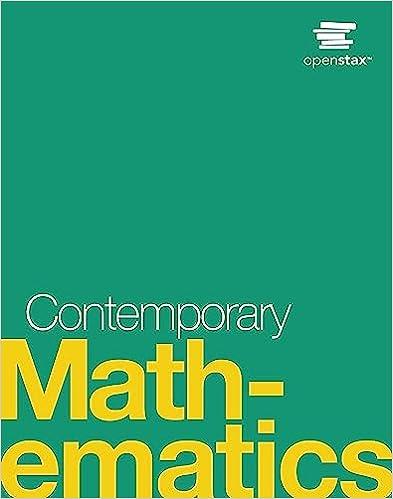Question
All of these ways in which the poor cope with risk tend to be very costly. This has been well documented for agriculture: In India,
All of these ways in which the poor cope with risk tend to be very costly. This has been well documented for agriculture: In India, poor farmers use farm inputs in a more conservative but less efficient way when they live in areas where rainfall is more erratic. Poor farmers' profits rates go up by as much as 35 percent when they live in areas where the yearly rainfall pattern is very predictable.
(a) Using the concepts studied last class, can you explain why poor farmers might choose to use farm inputs in a "less efficient way"? Does it mean that poor farmers are not rational? (Please explain briefly. One or two sentences are enough)
(b) Can you think of a possible Pareto improving trade between the farmer and some other economic agent? Explain briefly.
(c) How do economists explain the fact that these Pareto improving trades are difficult to come about? Explain briefly
Part B.
(d) A farmer must choose whether to invest in the purchase of an input (say a fertilizer). By investing, the farmer faces the following income prospect (assume that he does not have any other source of income).
Normal rain Little rain
Invest $1000 $100
And by not investing
Normal rain Little rain
Not Invest $800 $200
Assume that the probability of the event "Little rain" is equal to = 1 10 (and the probability of the event "Normal rain" is 1 = 9 10 ). If the farmer is risk neutral, will the farmer invest or not? Explain
(e) Stop assuming that the farmer is risk neutral, but keep the same assumptions as in (1d). Assume that the farmer has preferences represented by the utility over monetary outcomes u(x) = 120 8000 x (1) Will a farmer with the above preferences invest or not? Explain
(f) Now assume that a (risk neutral) insurance company offers the policy that pays $C if the event "Little rain" occurs. Assume that the policy is fairly priced: How much is the premium that the insurance company charges?
(g) Keep assuming that insurance company offers a fairly priced policy. However the insurance company does not fix the coverage C, but lets the customer choose C. Under these assumptions, will the farmer with preferences described in the point (1e) invest or not? Will he buy insurance? If so, how much coverage C will he choose?
(h) Now assume that there are two types of farmers: The farmer we met before (call him L) and a farmer who lives in a slightly different microclimate (call this farmer H). Assume that farmer H is identical to farmer L apart for one thing: In the microclimate in which farmer H lives, the probability of the event "Little rain" is equal to H = 0.2. If the insurance company can distinguish between the two farmers and offer different insurance policies, what is the fair premium for the farmer H? Will he buy insurance? How much? will he invest?
(i) Now assume that the insurance company cannot distinguish between the two types of farmers. And assume that the proportion of H farmers is equal to 0 < q < 1. Without making any calculations can you explain why in such a situation we can have "adverse selection". Be as clear as you can.
Step by Step Solution
There are 3 Steps involved in it
Step: 1

Get Instant Access with AI-Powered Solutions
See step-by-step solutions with expert insights and AI powered tools for academic success
Step: 2

Step: 3

Ace Your Homework with AI
Get the answers you need in no time with our AI-driven, step-by-step assistance
Get Started


